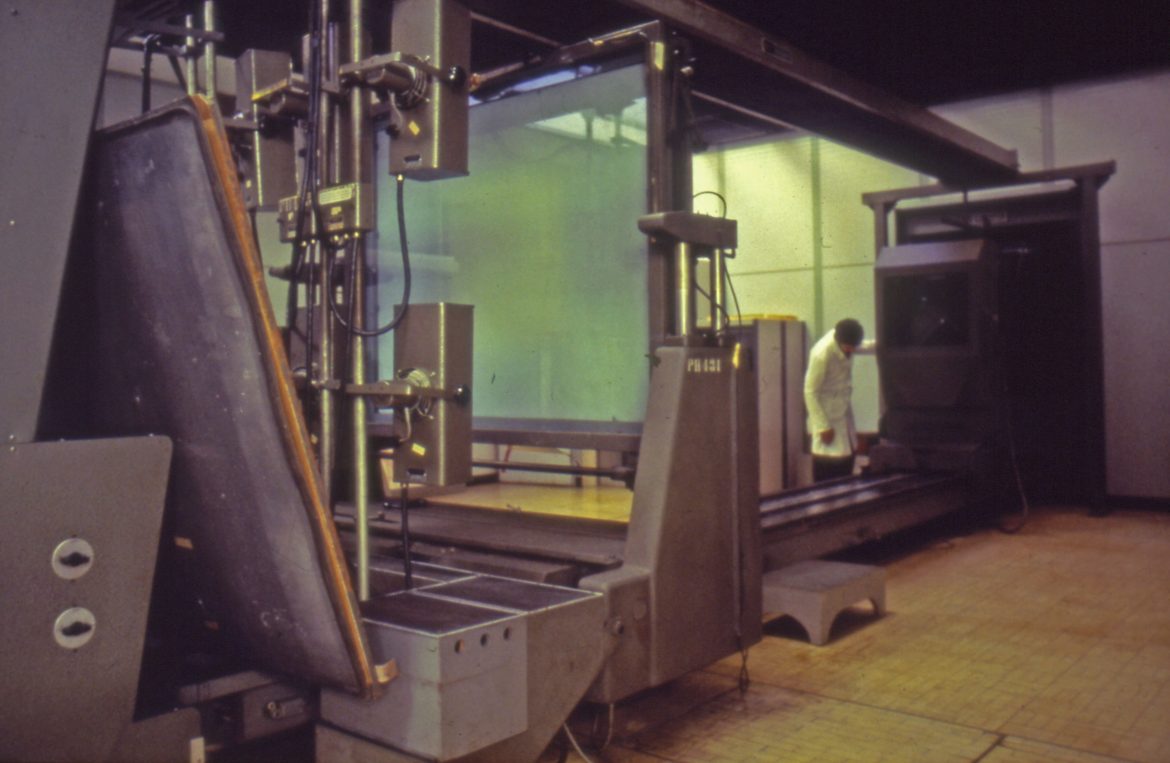The Photographic work area was part of Graphic Repro and located on the ground floor of the William Roy Building, where the Garden Room and training room suite in the Business Centre were later constructed. It contained several giant cameras for making copies of maps for printing but the advent of computer technology in the 1990s made them obsolete.
The process cameras consisted of several large components mounted on a rail that adjusted the focusing and so on. At the far end was a ‘copyboard’ – the original drawing was attached to this. A set of powerful lamps illuminated the copyboard to illuminate the subject. The lens was also mounted on the rail and looked very much like an old-fashioned camera with a ‘bellows’ type light enclosure. The ‘inside’ part of the camera was in a separate room, which was dark. Here, the camera operator controlled the camera settings. Focusing was done using a ground glass screen.
Attached to the back of the camera was a frame fitted with a vacuum pump – the film (a large sheet of it) was held in place via the vacuum and the frames were closed and the shutter opened to expose the film. The film was then processed in the darkroom to produce a negative for the Photo Litho Composing (PLC) section, the next step in the production process.
The cameras were also used for changing scale – for example, in 1:10 000 scale production, generalised detail and ornament was drawn at 1:5 000 scale and then photographically reduced to 1:10 000 scale. The same principal was used for 1:25 000 scale maps, which were produced from the 1:10 000 scale.
Different colours and filters were used to produce four different plates for colour printing for example, contours, vegetation, water etc. There was a rigorous attention to detail – the line gauge (thickness) had to be measured with a microscope to ensure it met the specification.
Orthochromatic and Panchromatic glass plates were used for various purposes. The former could be used safely with red darkroom safe lights but the Panchromatic plates had to be handled in complete darkness. The staff developed (pardon the pun!) various ways of determining which side of the plate had the emulsion. The plates could be 24 x 36 inches in size.
By the mid 1990s, the large cameras had became obsolete and so were removed, with the last one being decommissioned in 2002. This was located where the Business Centre training rooms were.
The cameras in detail
Camera 1 – HPL Littlejohn (PH431)
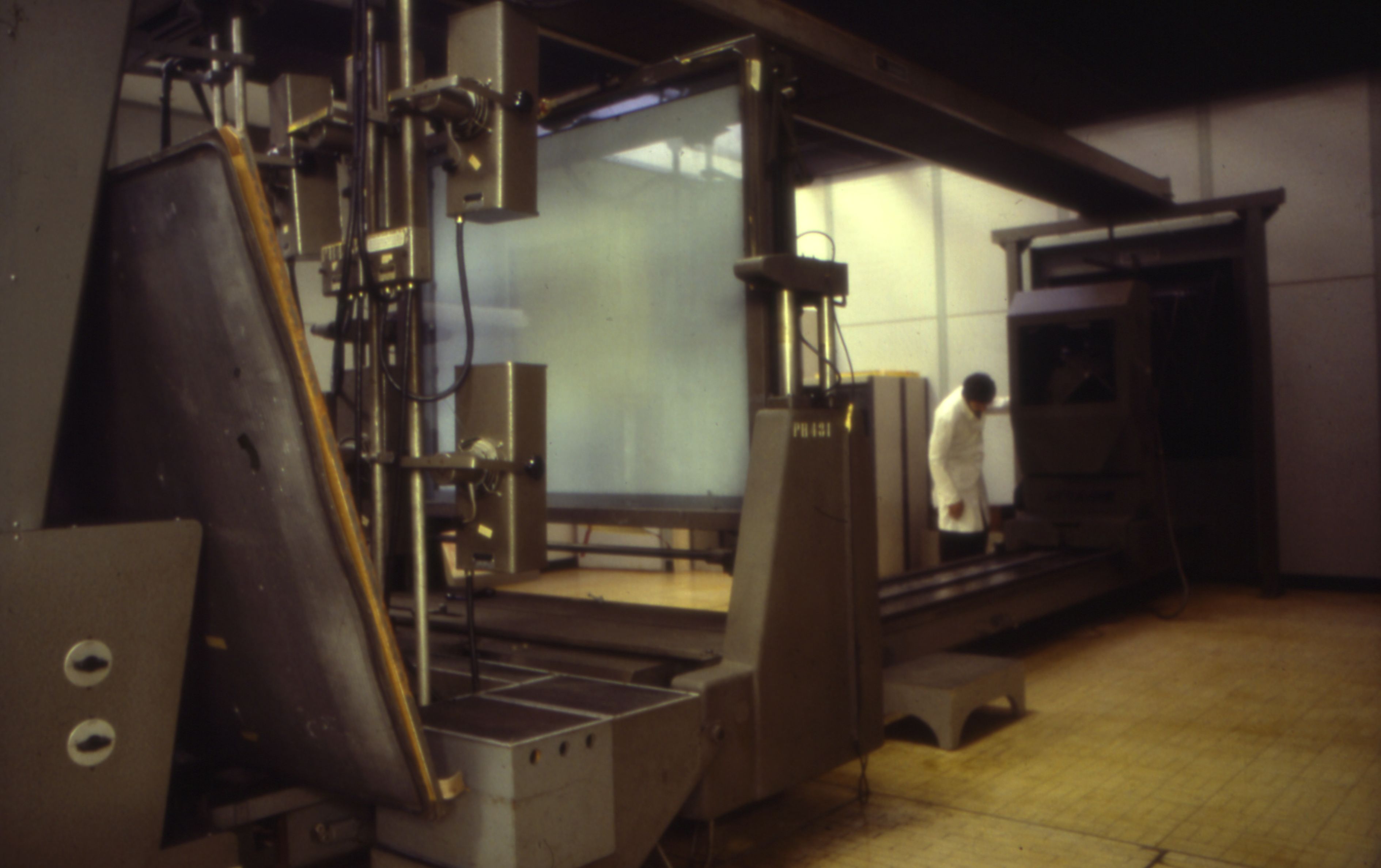
This camera known as ‘Camera 1’ was made by Hunter Penrose Littlejohn and specially designed for Ordnance Survey. At the time of installation, it was the most advanced and accurate camera of its size in the world, with only two others that come anywhere near it.
Camera 1 was originally installed at OSO Crabwood in the mid-late 1960s. The architect who designed the temporary studio that had been built for it underestimated the size of the camera components and the doors were all too small so a large part of the outside wall had to be removed to allow installation of the camera.
The camera was moved to its permanent home at Maybush in the late 60s,
Unlike the more similar but more basic Camera 2, this one had a reversing mirror for reversing the images it captured. The copy board arrangement was also quite different and it had a large (6 inch) circular halftone screen – perhaps the largest ever made! This was used to make tints and suchlike but was rarely used for full colour separation.
The copyboard on camera 1 had a lift-out vacuum board that held the material to be reproduced flat and in place without having to mount it.
The film was processed in dishes in the darkroom behind the camera, behind 36” x 24” glass plates.
The camera was scrapped allegedly because it was too costly to dismantle and transport and was not replaced – its room was used as a Photo 1A examination area.
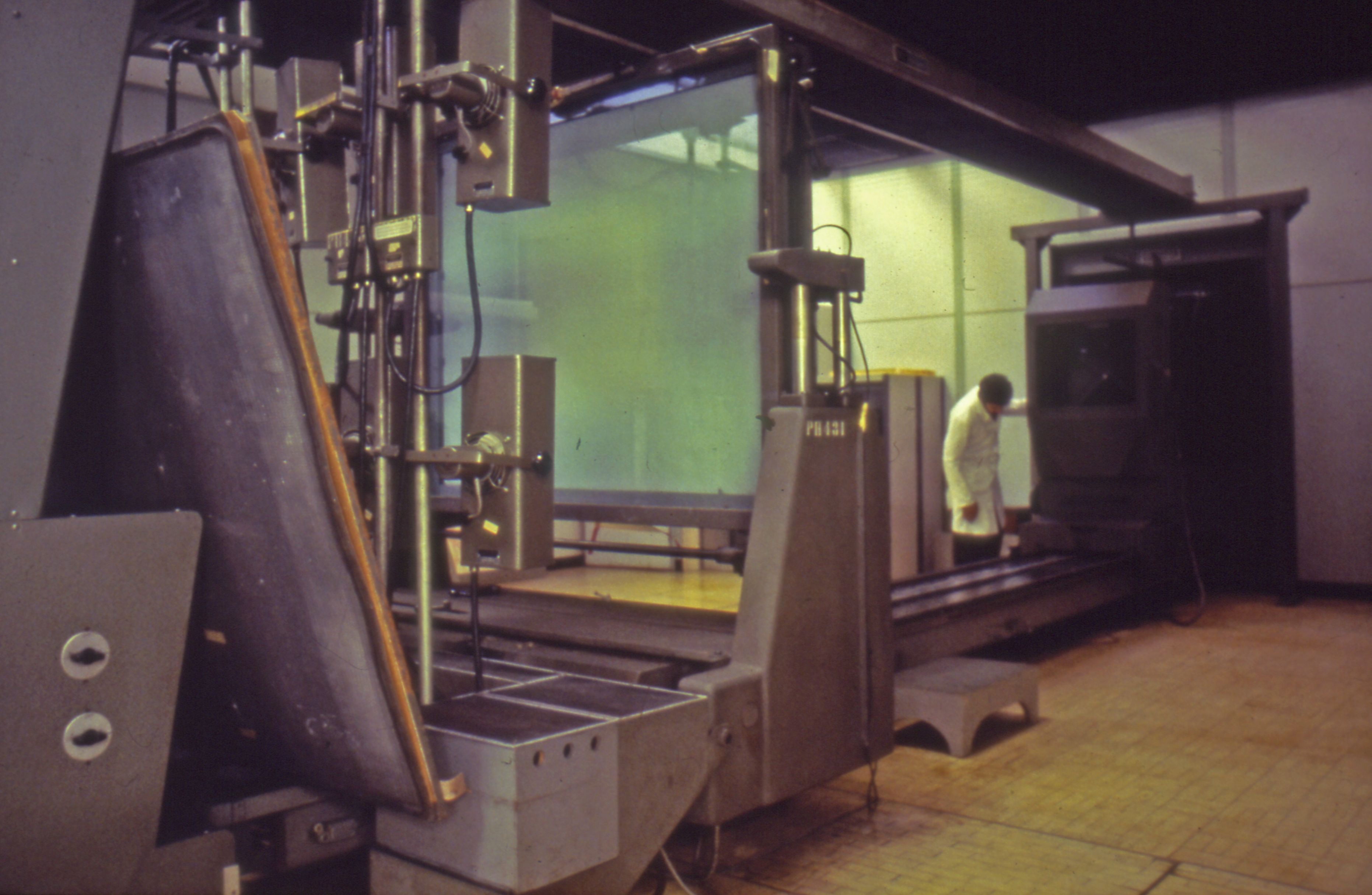
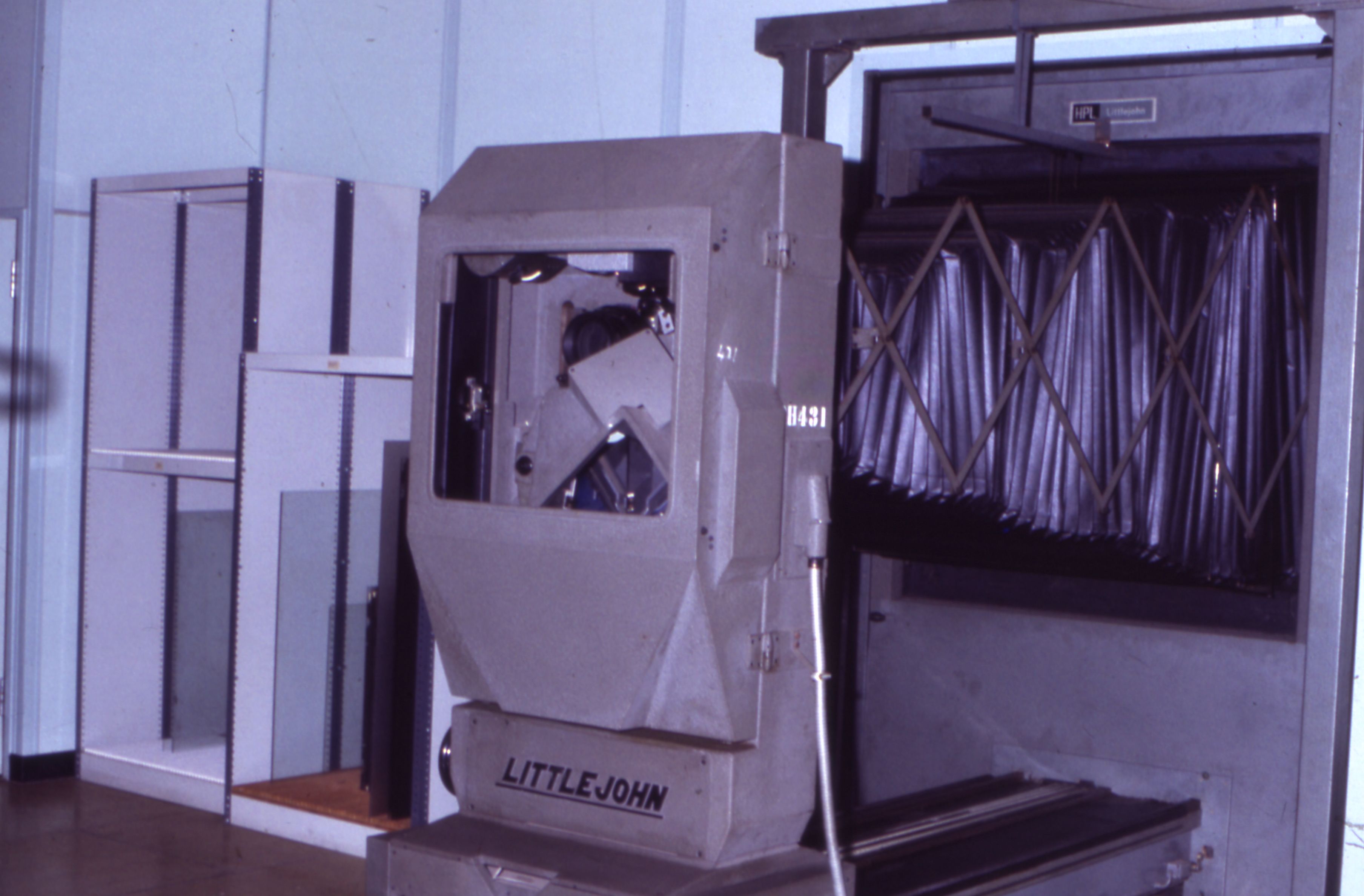
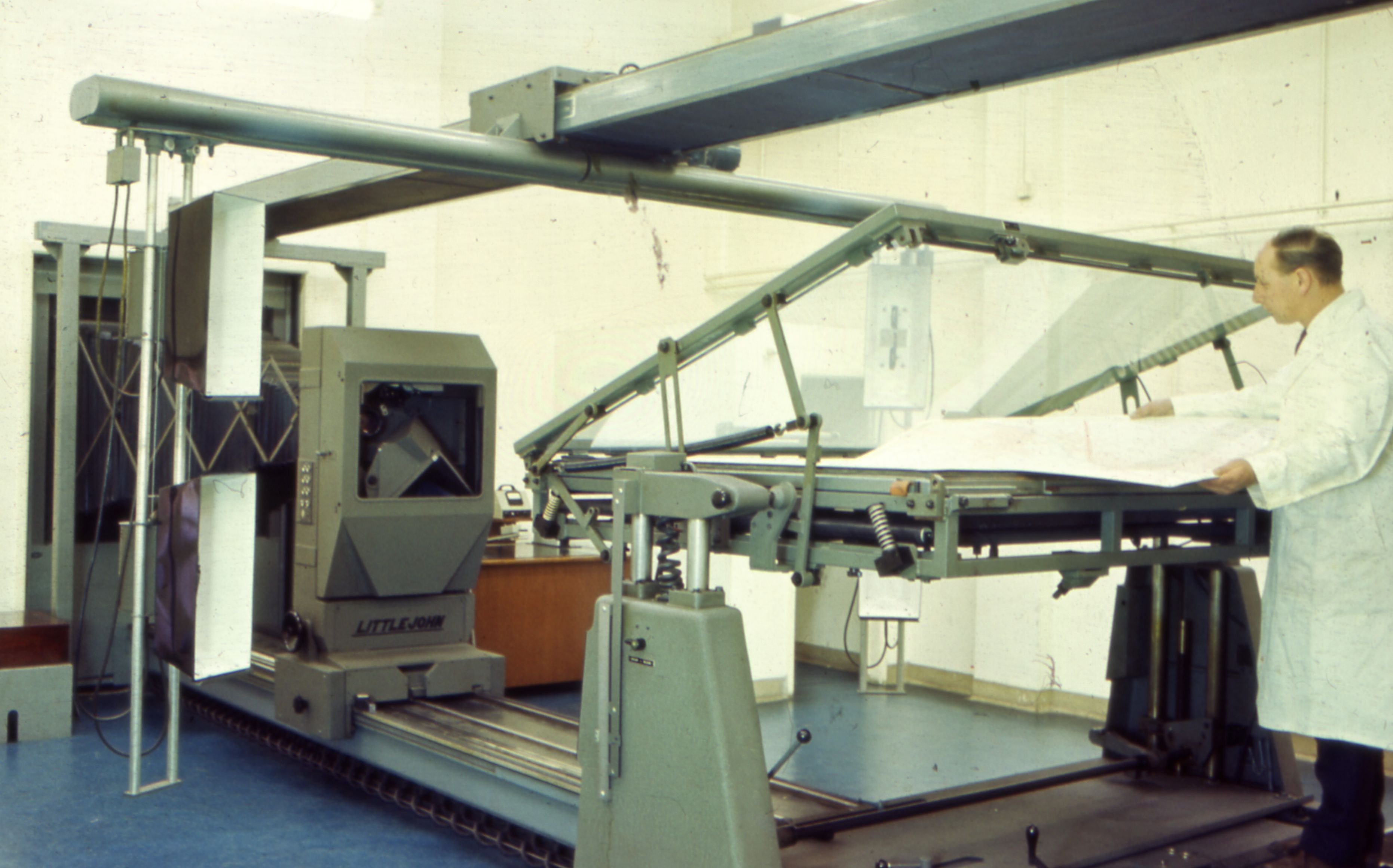
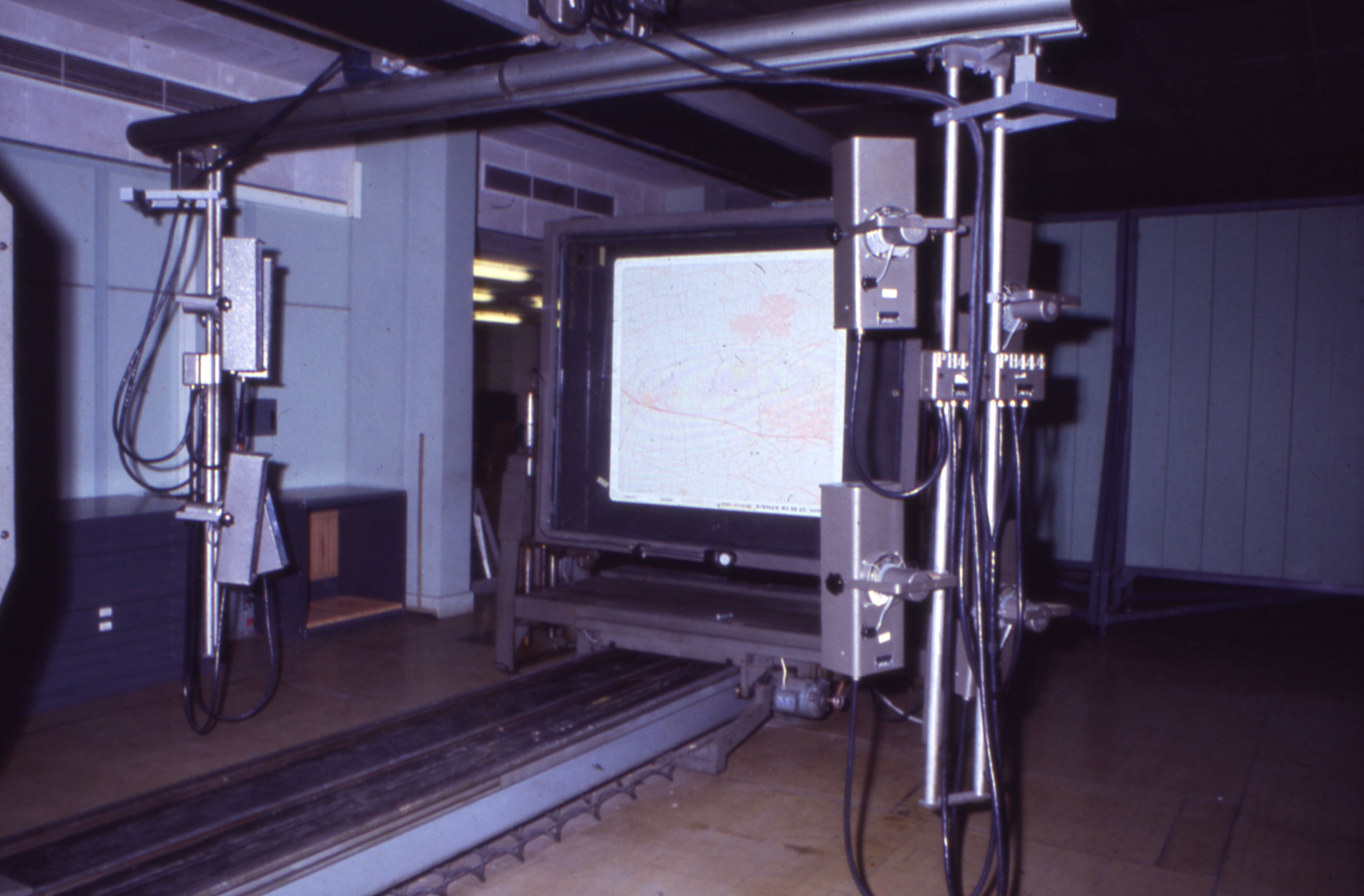

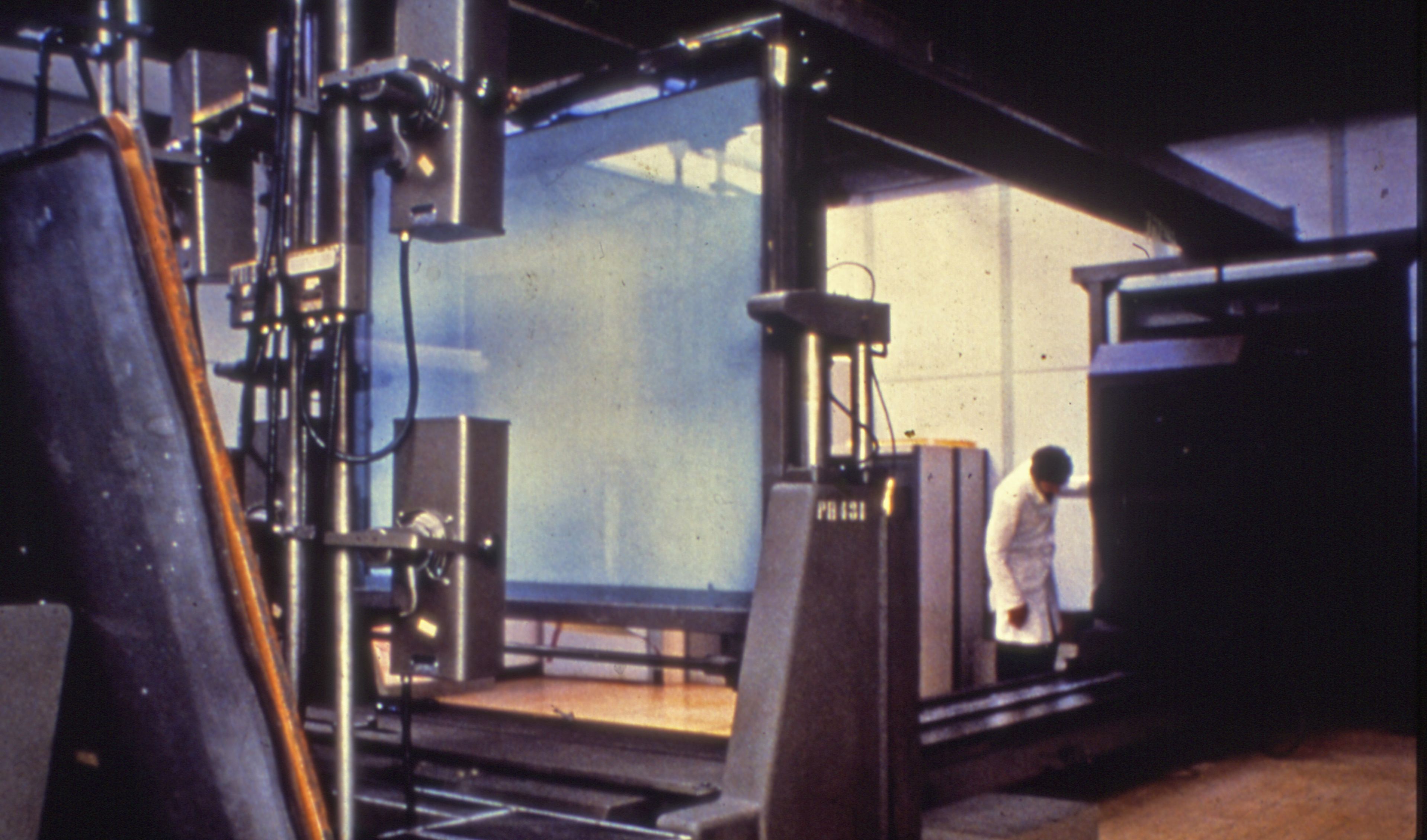
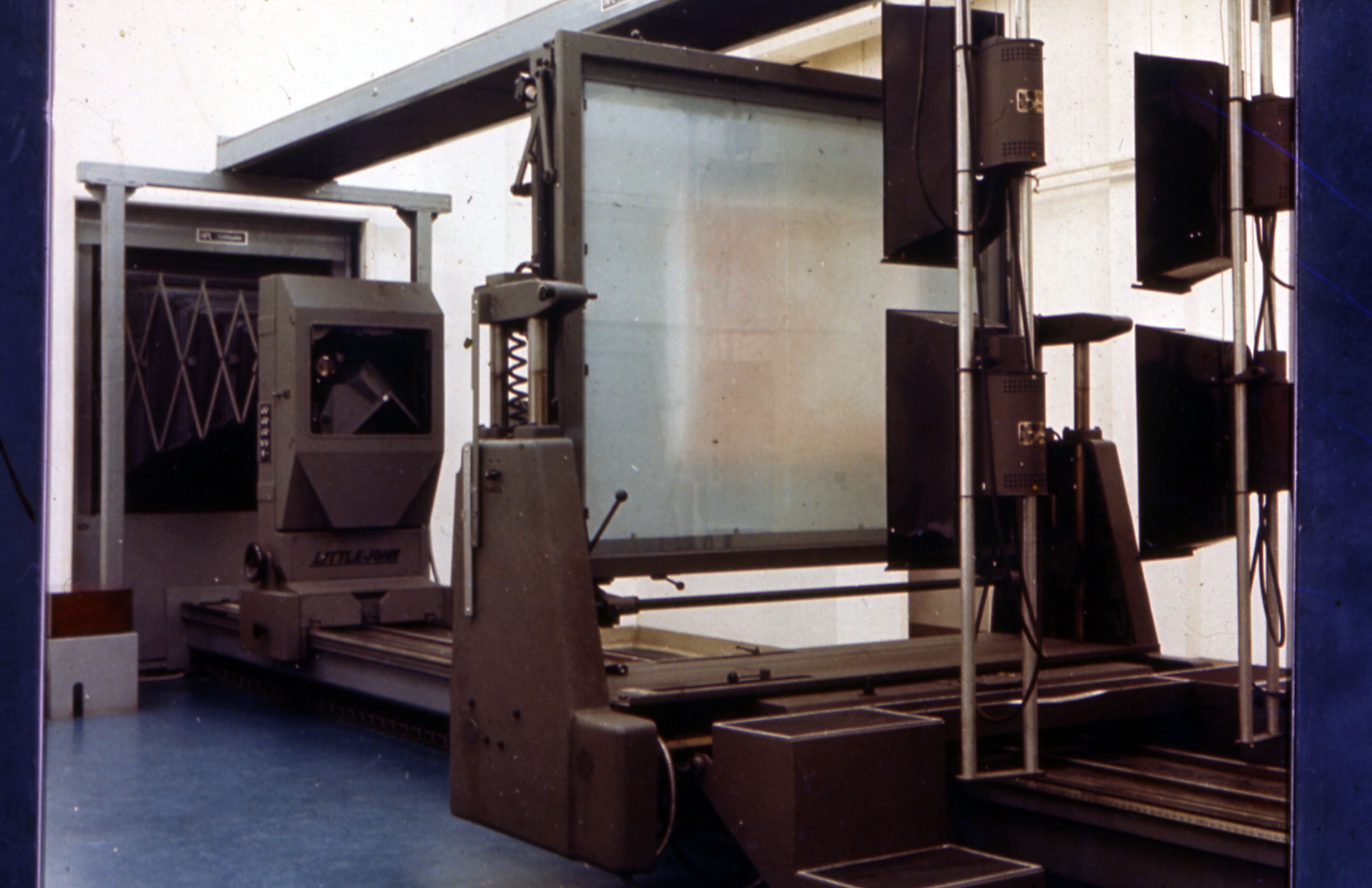
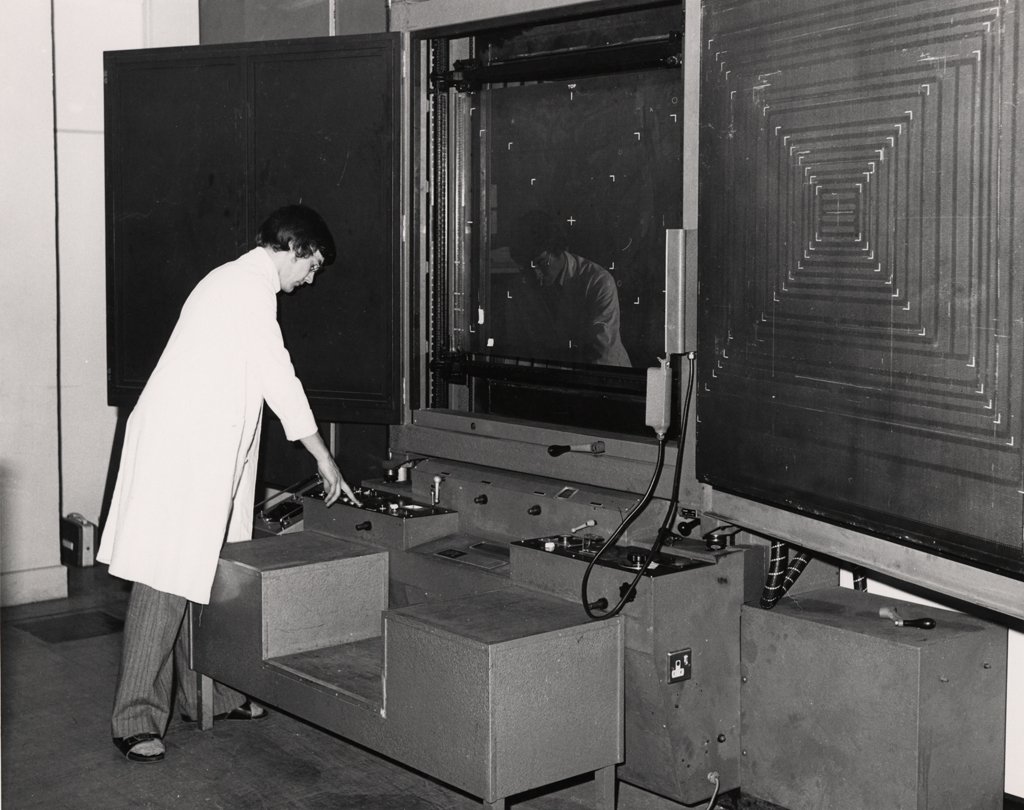
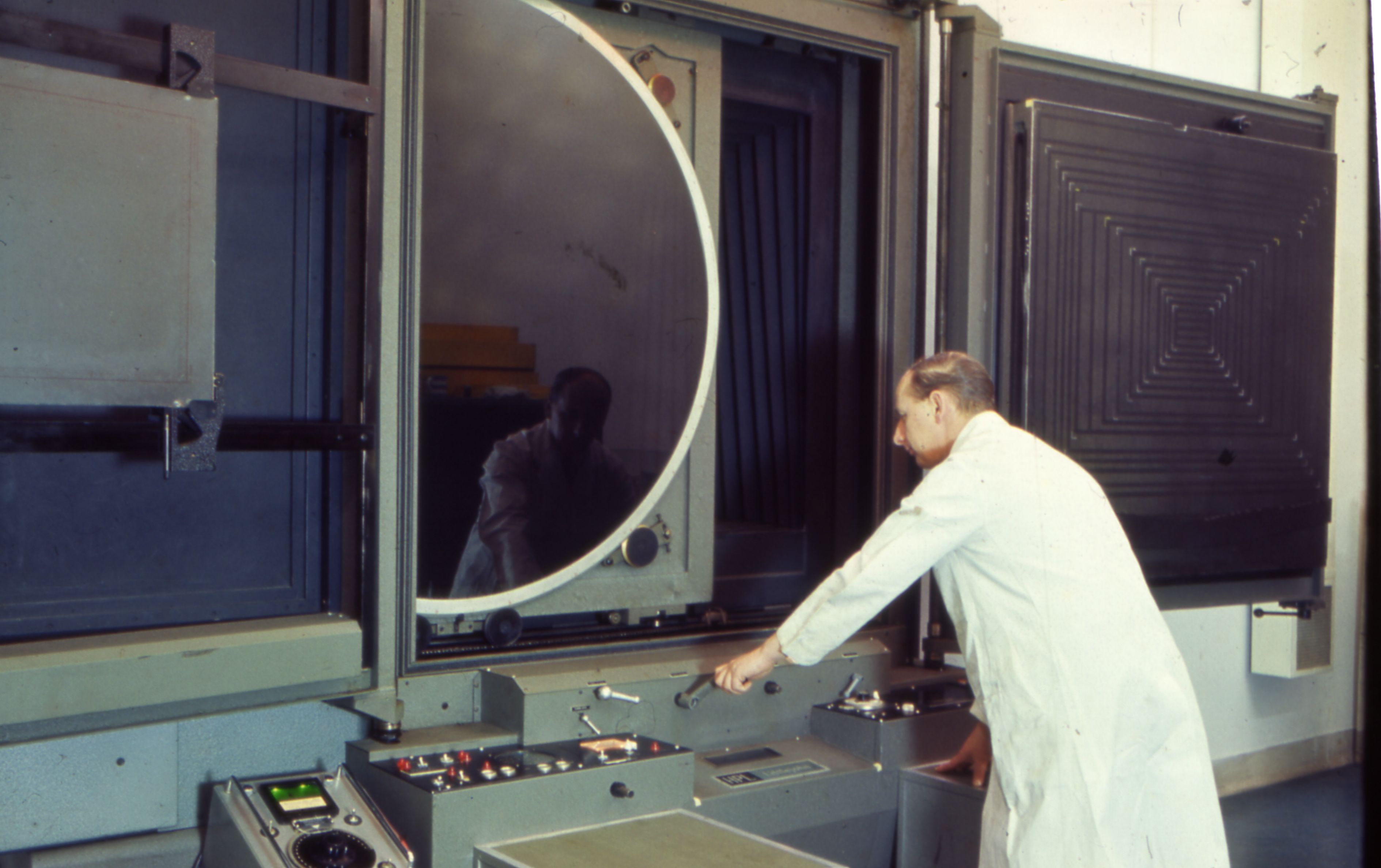
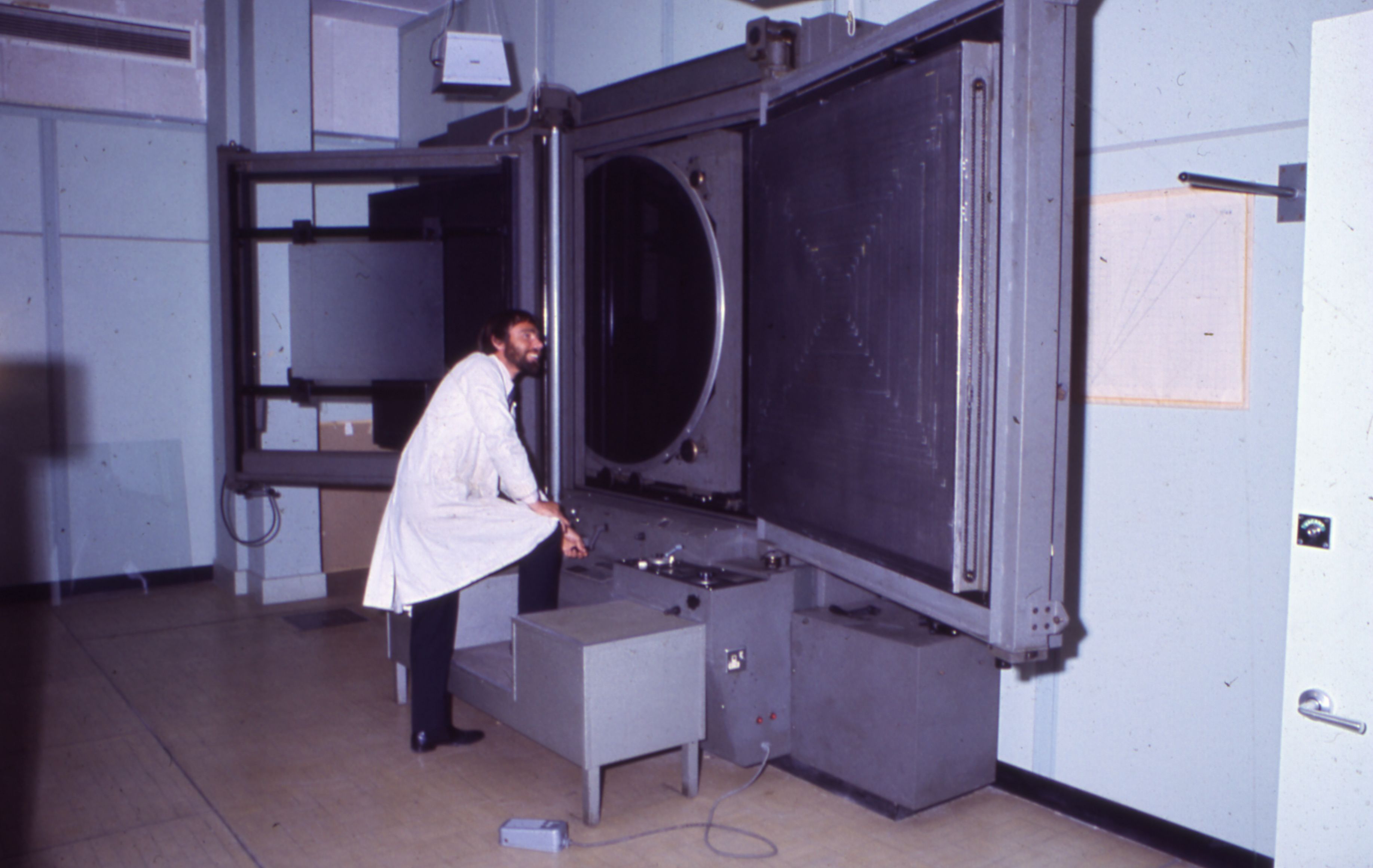
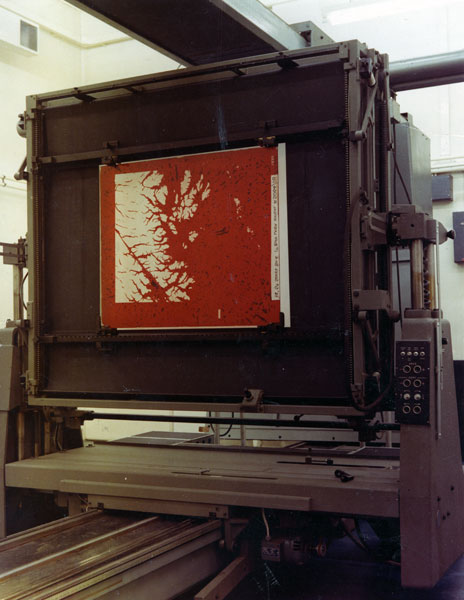
- Film size: 66” x 44”
A British Pathe newsreel from 1965 features an excellent demonstration of this camera being operated.
Camera 2 – Littlejohn (PH 432)
Camera 2 was another Hunter-Penrose Littlejohn although it was more basic than Camera 1 and didn’t have the halftone screen or reversing mirror and did not have the vacuum copyboard.
Camera 3 – Monotype Ferdinand
Camera 3 was a Monotype camera known as Ferdinand. It was originally located in Studio 6 at OSO Crabwood (the temporary huts near Crabwood House) and was installed in the early 60s or before. It was dismantled and relocated to the new Maybush building in 1969. The camera was bought from the USA.
The Monotype camera was one of two that Ordnance Survey had at OSO Crabwood , this had a 69 inch focal length lens and used arc lamps to illuminate the copyboard. Carbon arc lamps were used in several areas within Repro in the early 1960s, including Helio as well as Photographic, but they were gradually phased out before the move to Maybush. Not only did they generate a lot of heat and UV light but also a lot of carbon dust. Vibration caused the carbon rods to fall out regularly and this could have caused a fire risk. It was often the job of trainees to kick them away from combustible material!
The back of the camera was apparently eroded where the film went at the back as it was originally used for exposing onto wet glass plates! Before 1960, all negatives exposed were on wet glass plates. Dry plate emulsions with a thinner gauge of glass were introduced soon afterwards. Ordnance Survey’s methods used an adaption of the wet Collodion process [Wikipedia] that was invented by Scott Parker in the 1860s. The steps needed to get an image on a plate of glass using this method were laborious and many of the chemicals involved were far from safe!
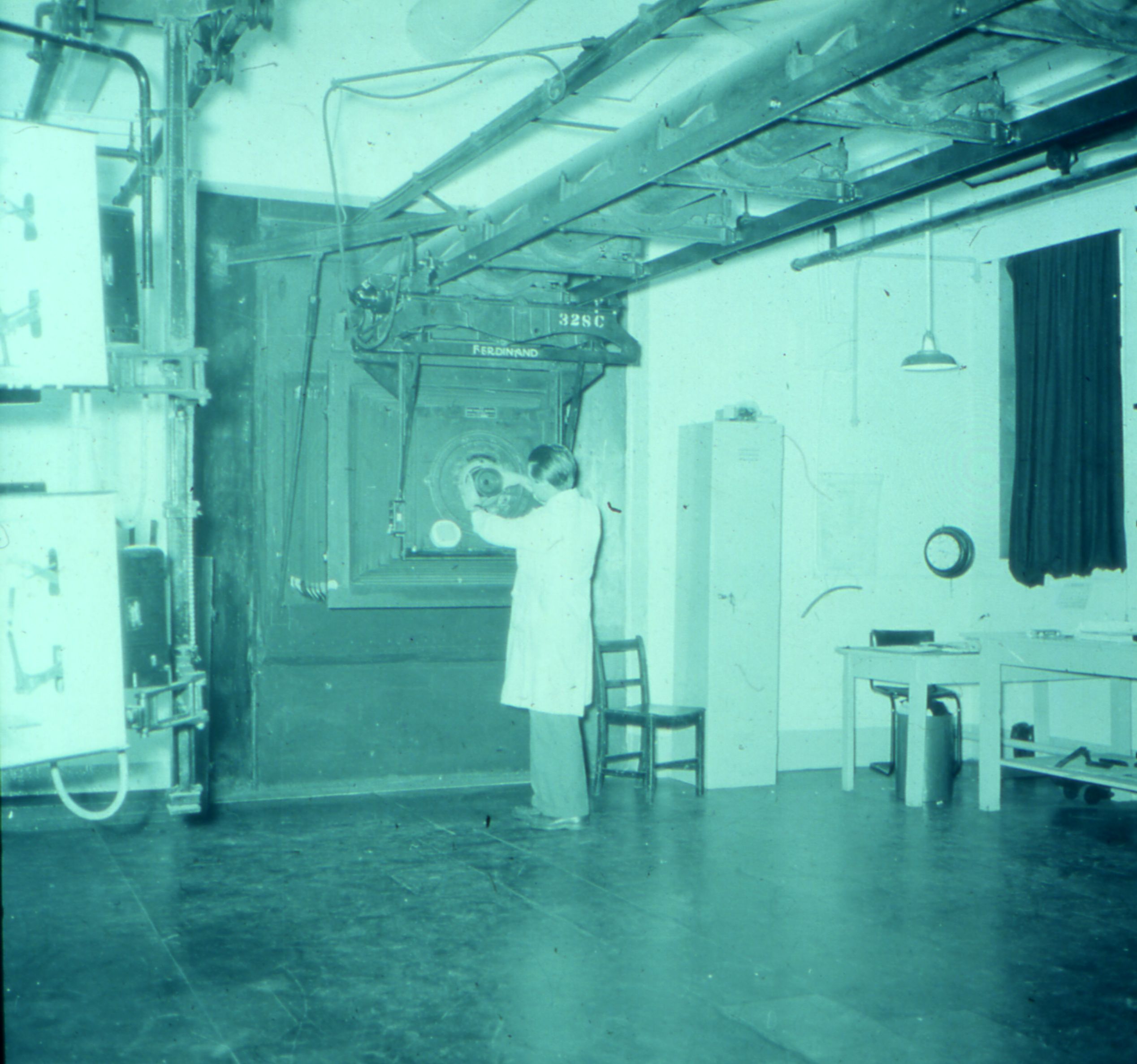
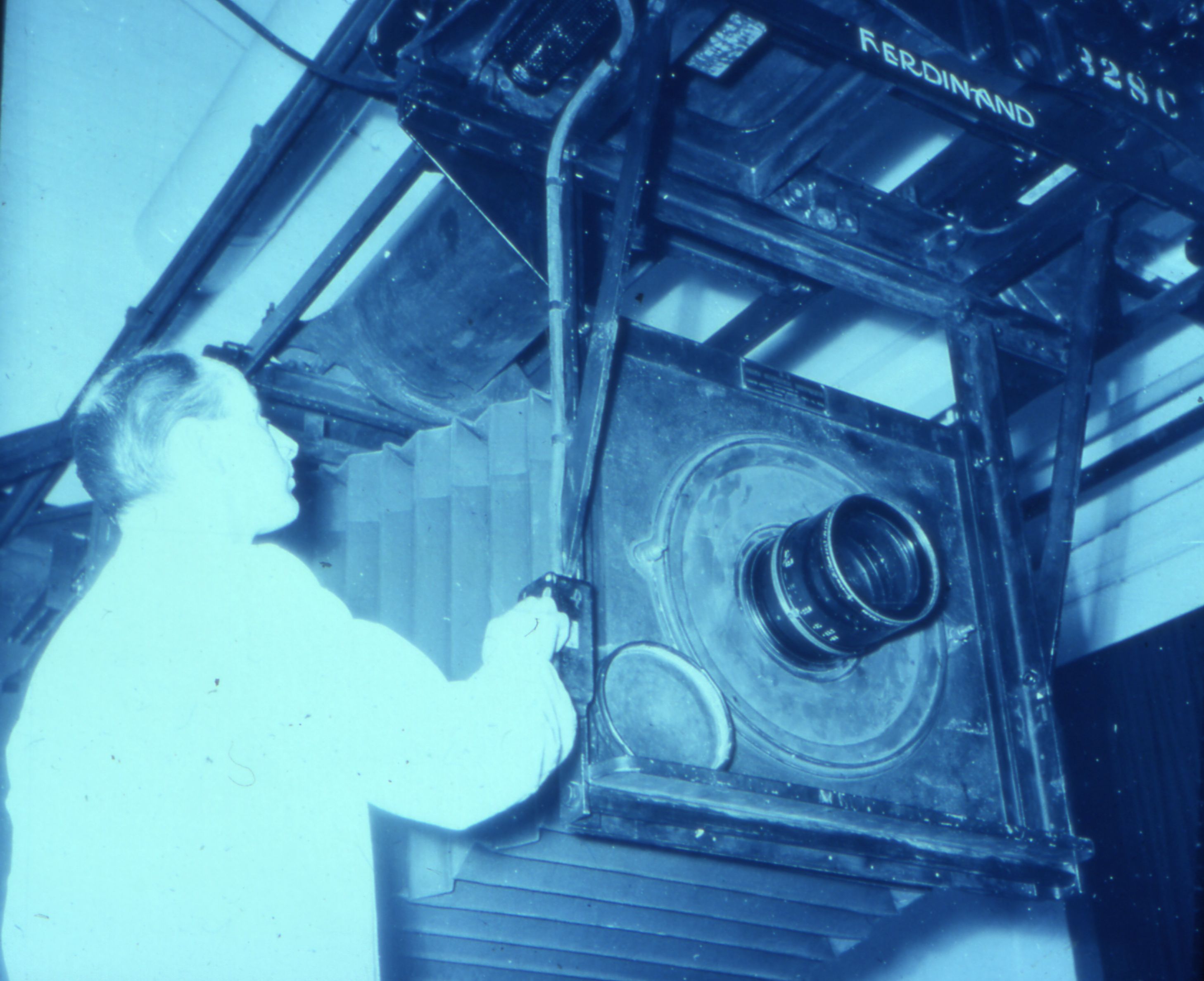
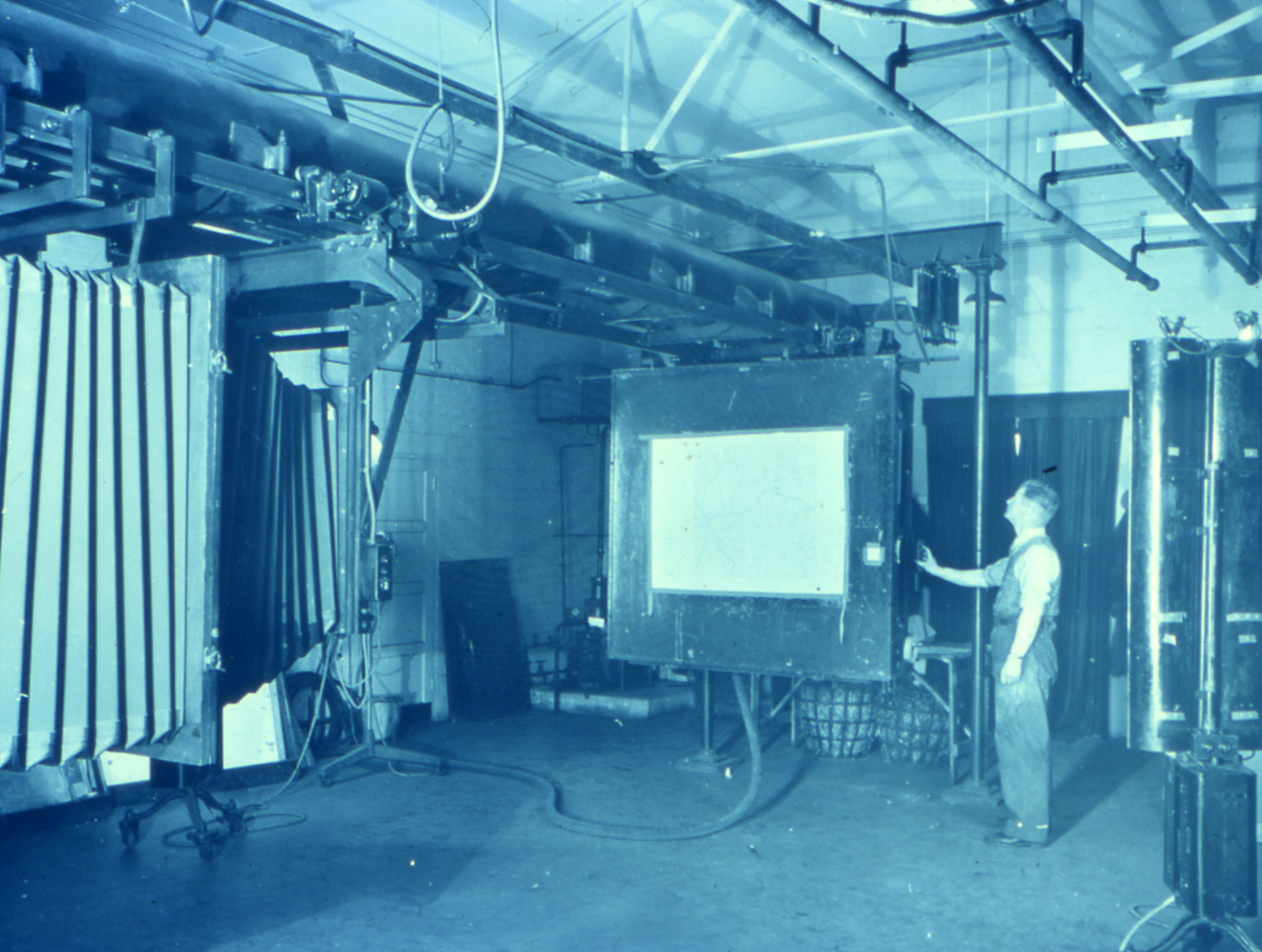
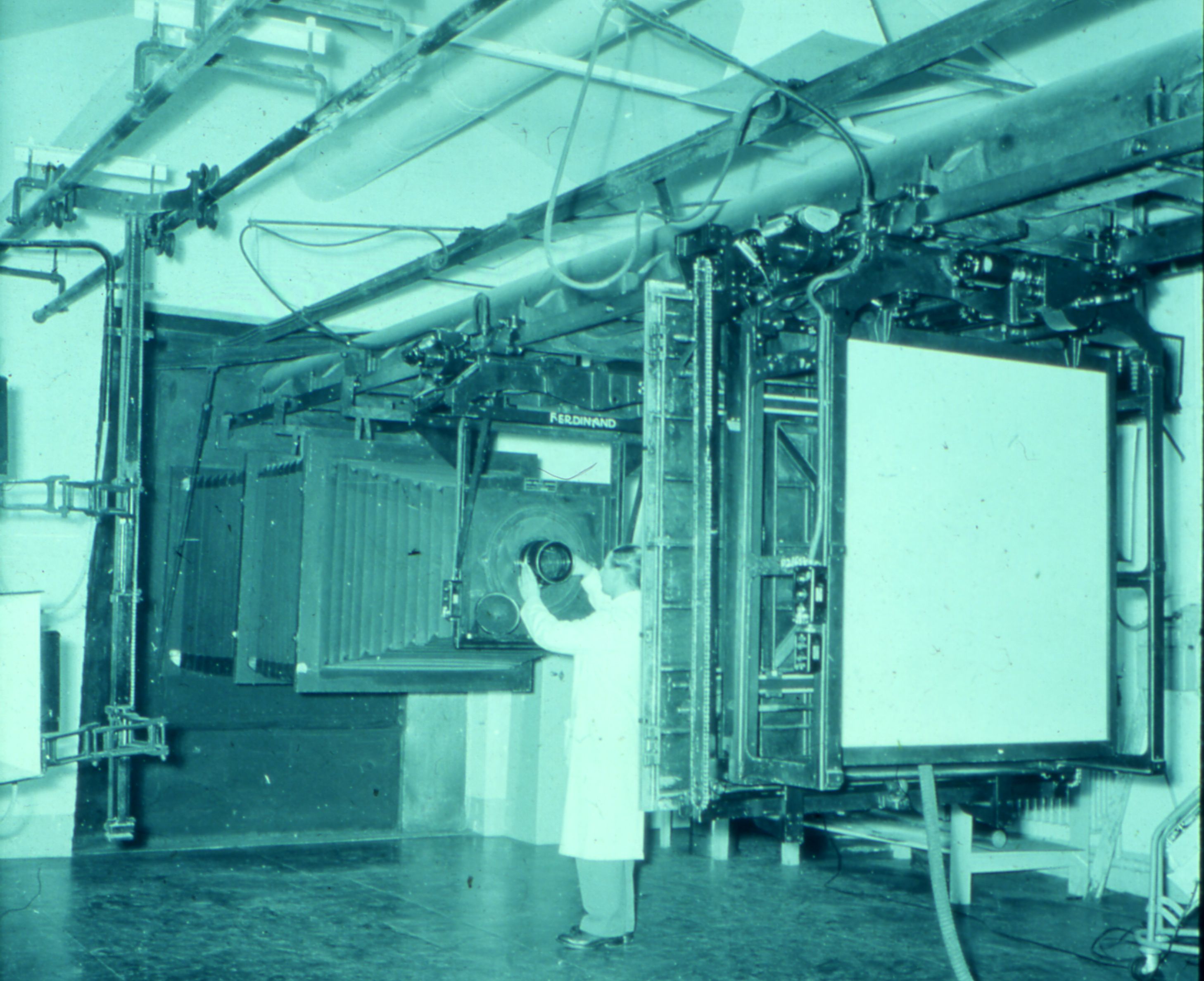
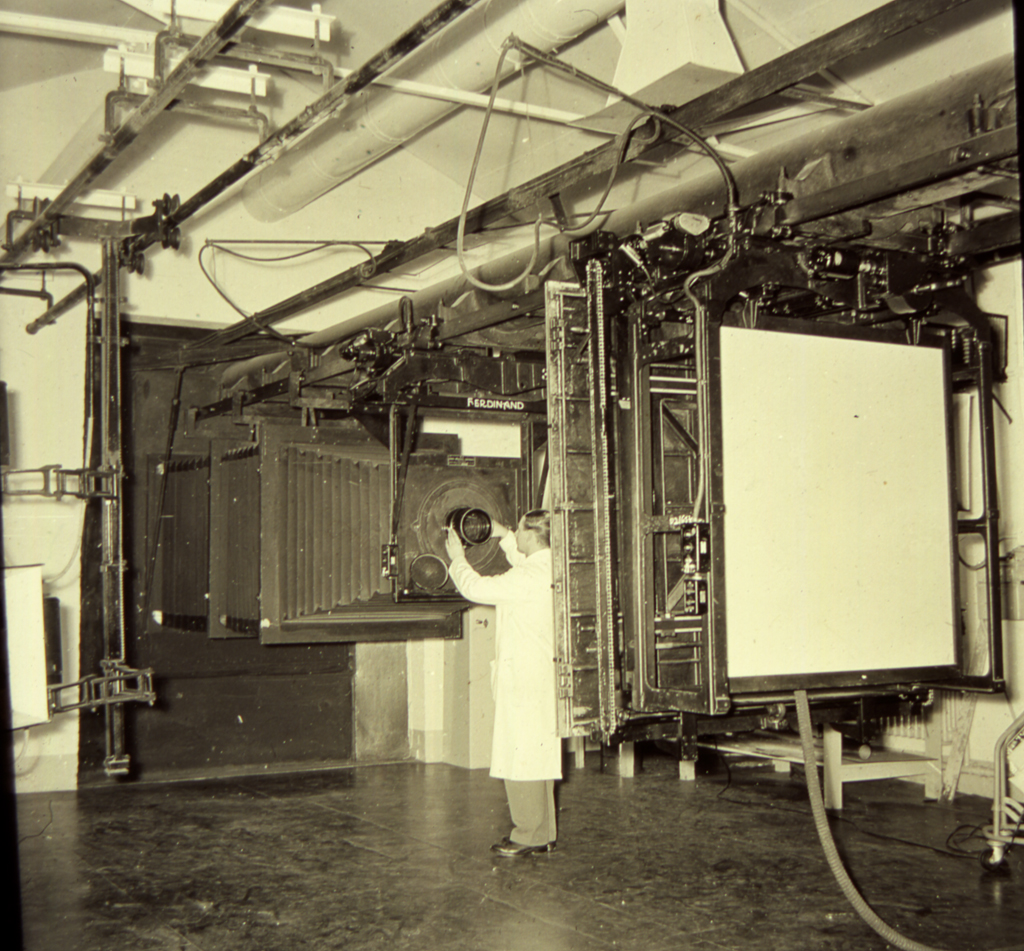
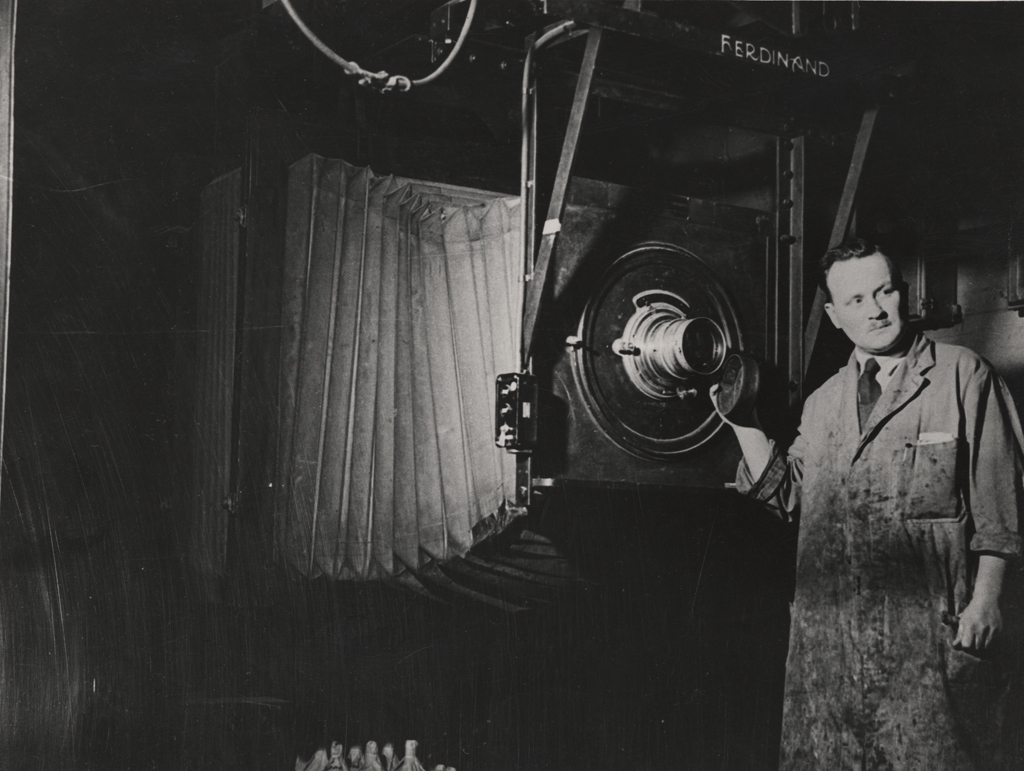
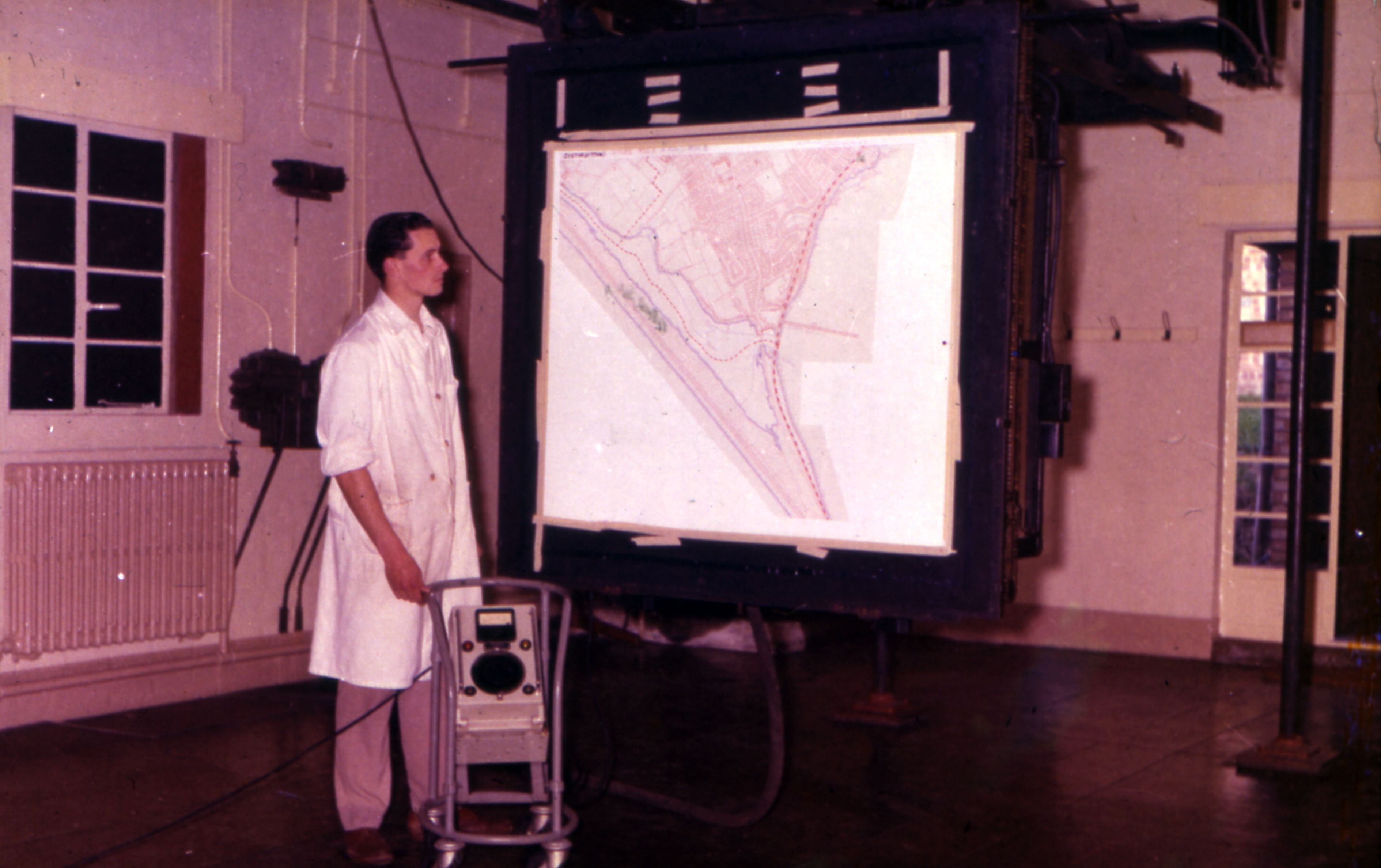
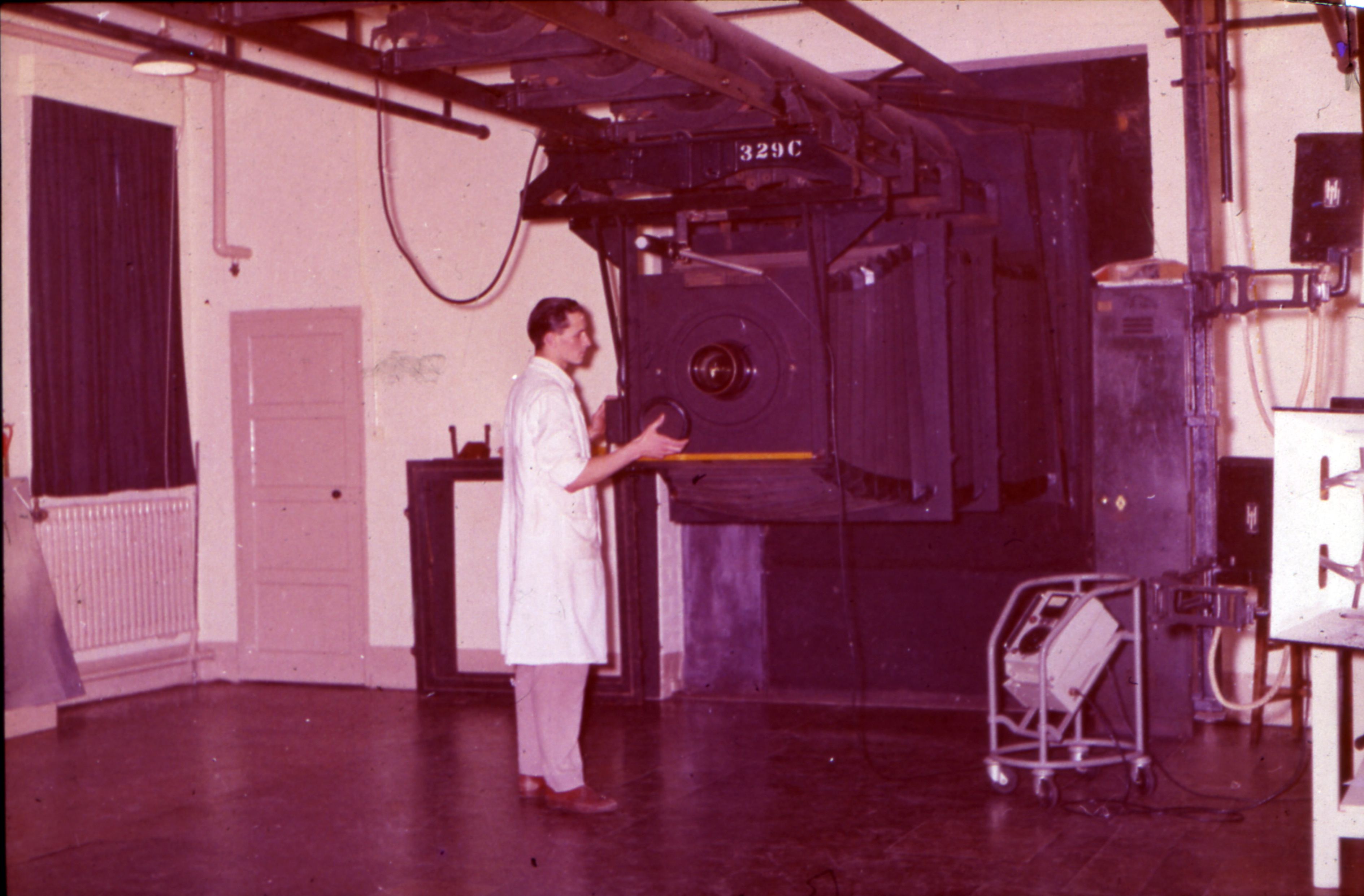
Map Survey Pathe News 1961
The Monotype camera can be seen in action in 1961 in the excellent British Pathe video from 1961:
Dai Nippon DS 24:1
The Dai Nippon camera was installed in the mid-1980s to replace Camera 3 (the old Monotype camera). It had an overhead gantry like the Monotype but was much lighter built than the very sturdy ‘sewer pipe’ gantry that the Monotype used.
Many of the functions that had to be done by hand on older cameras would have been more automated. The Dai Nippon was the last of the process cameras used at Ordnance Survey and it was finally removed in 2002.
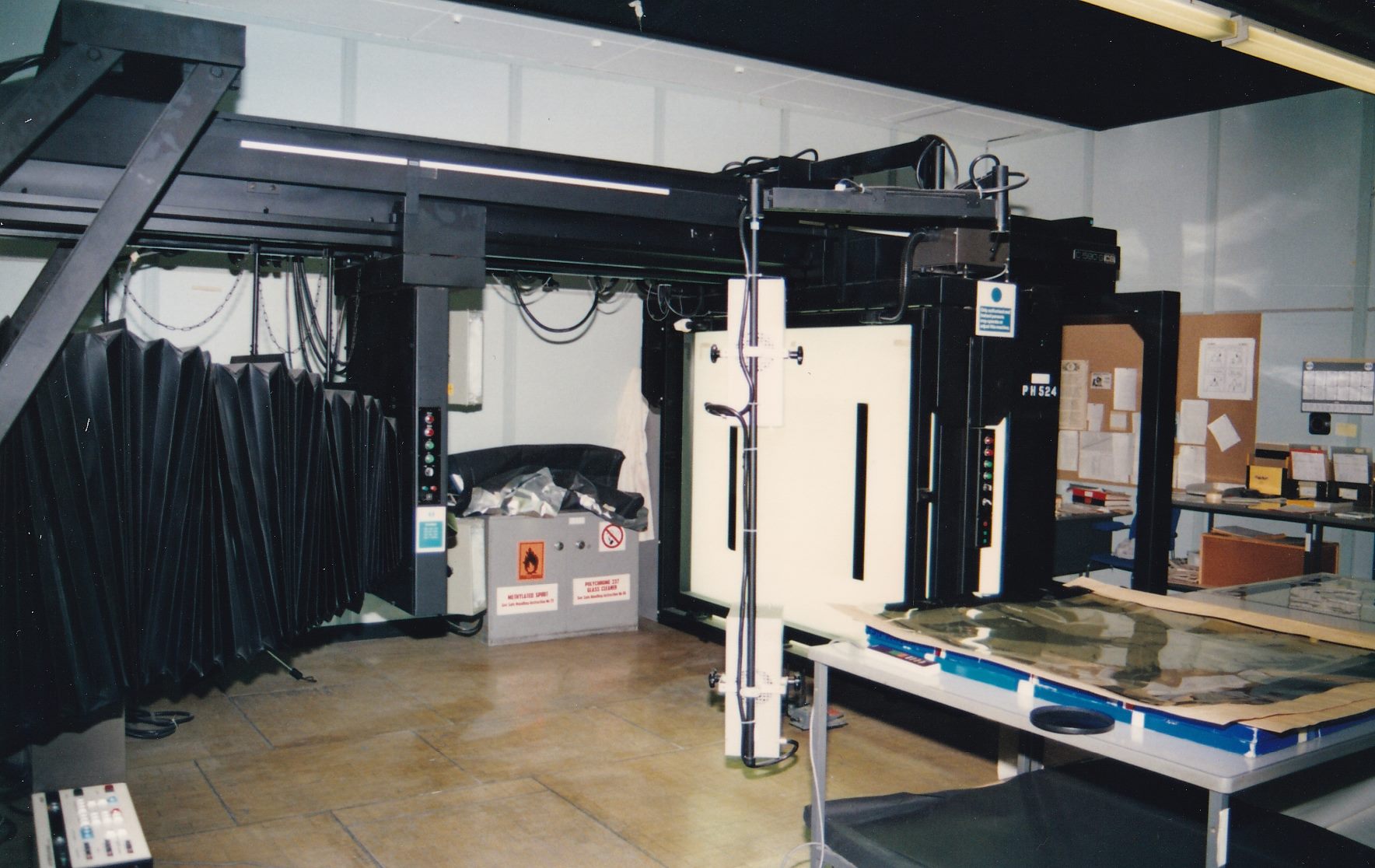
Fixed focus cameras
This was a fixed focus camera and as plan shows for 1 to 1 copying. Fixed focus means that the copy board for holding the originals, the lens panel and the plate holder were all locked into position to achieve an accurate copy of the map. This camera was used for copying of the 6 inch mapping series and continued to be used until the late 1960s. It was sited midway along the main corridor at Crabwood on the Romsey Rd side and was one of four fixed focus cameras at OS at the time with the other three being at London Road. None of them were taken to Maybush when OS moved to that site.
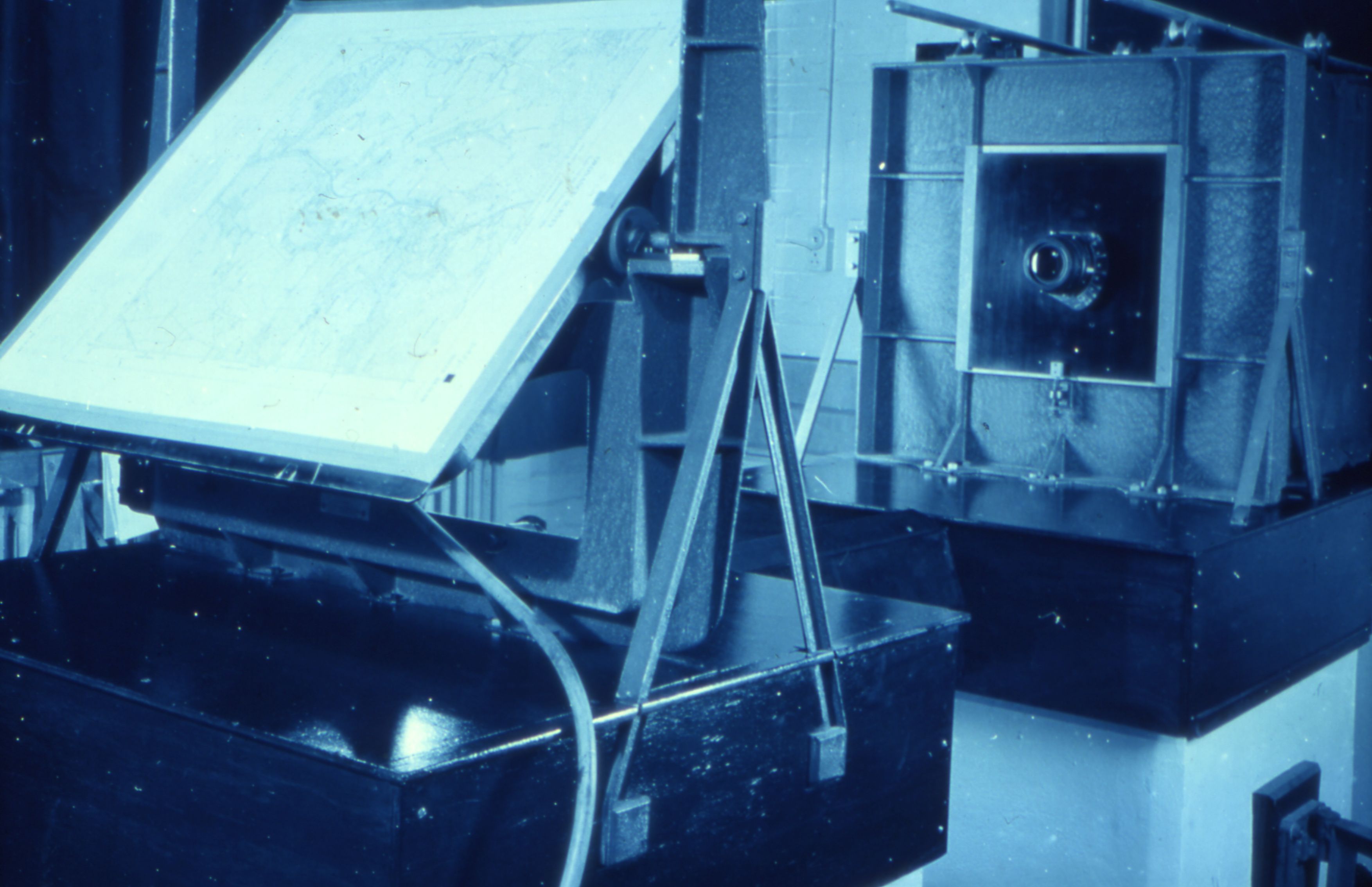
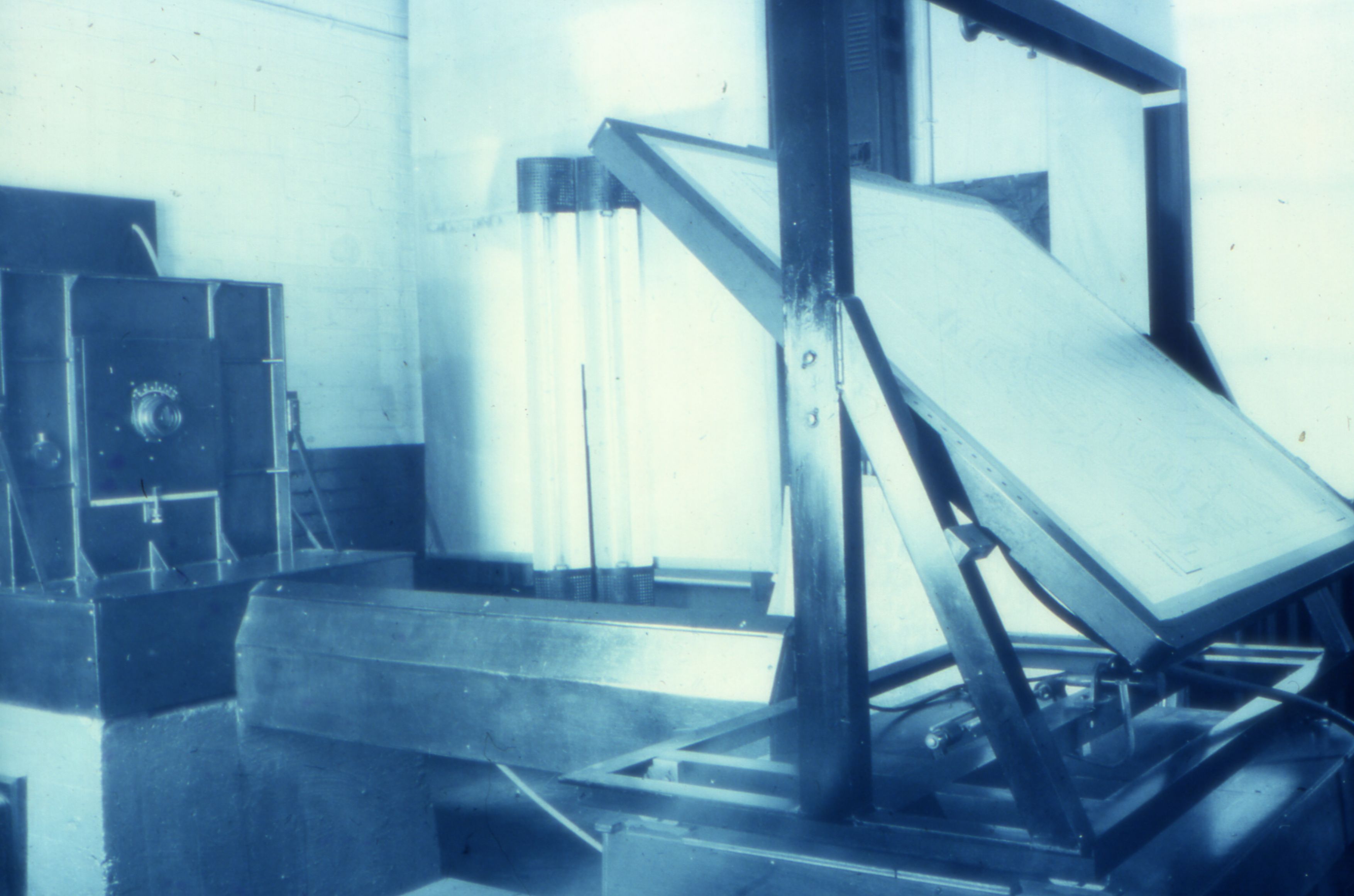
Older/other cameras
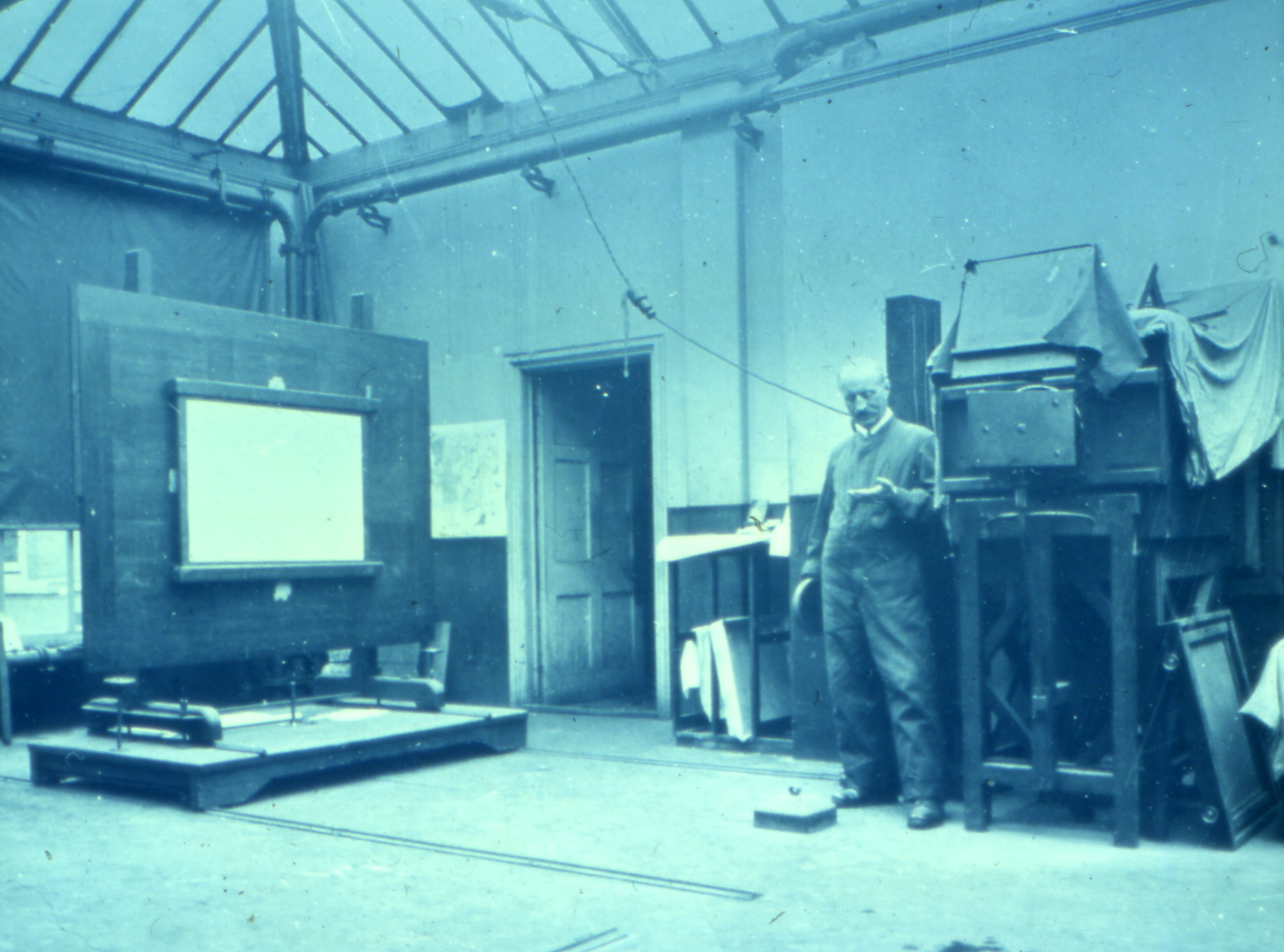
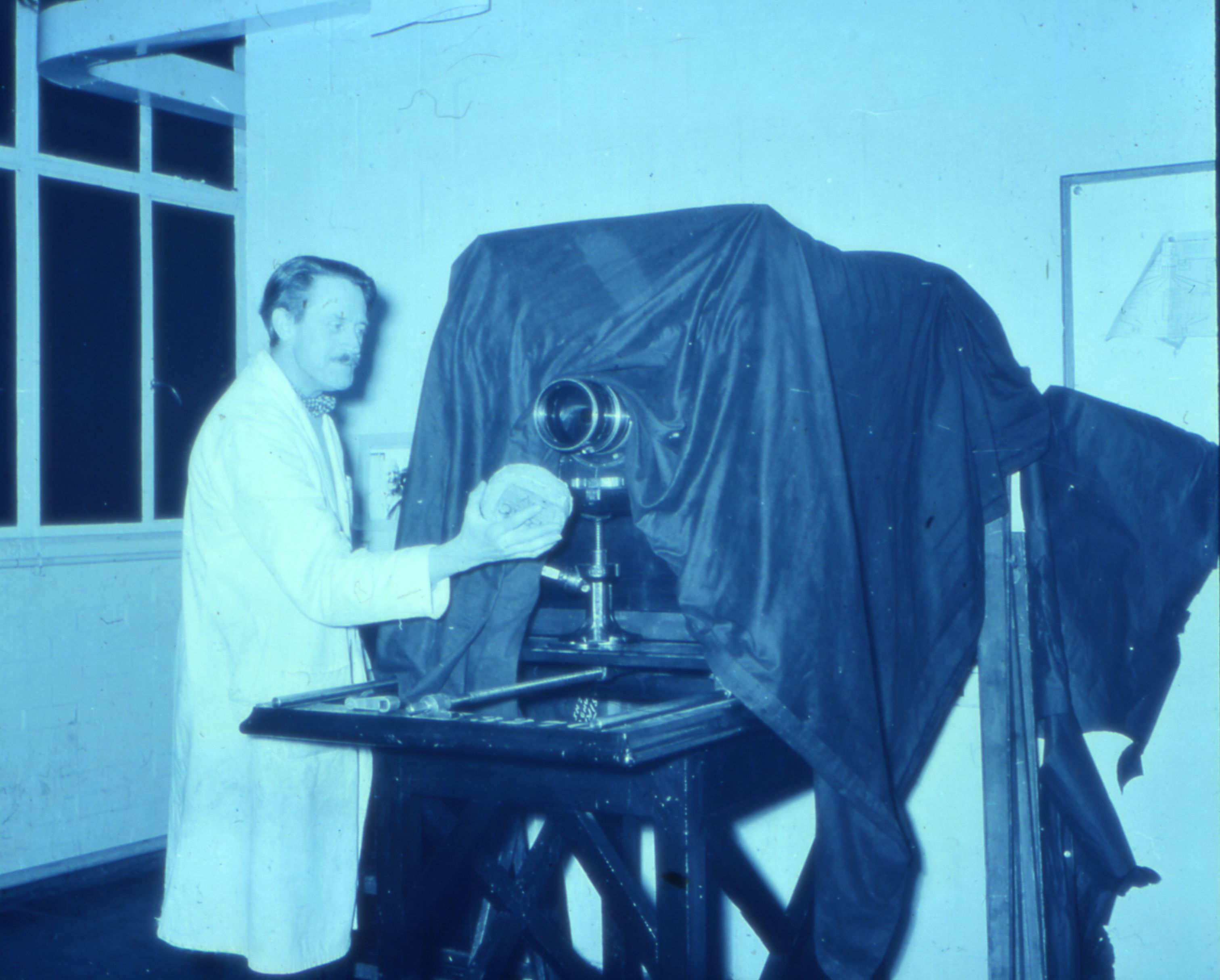
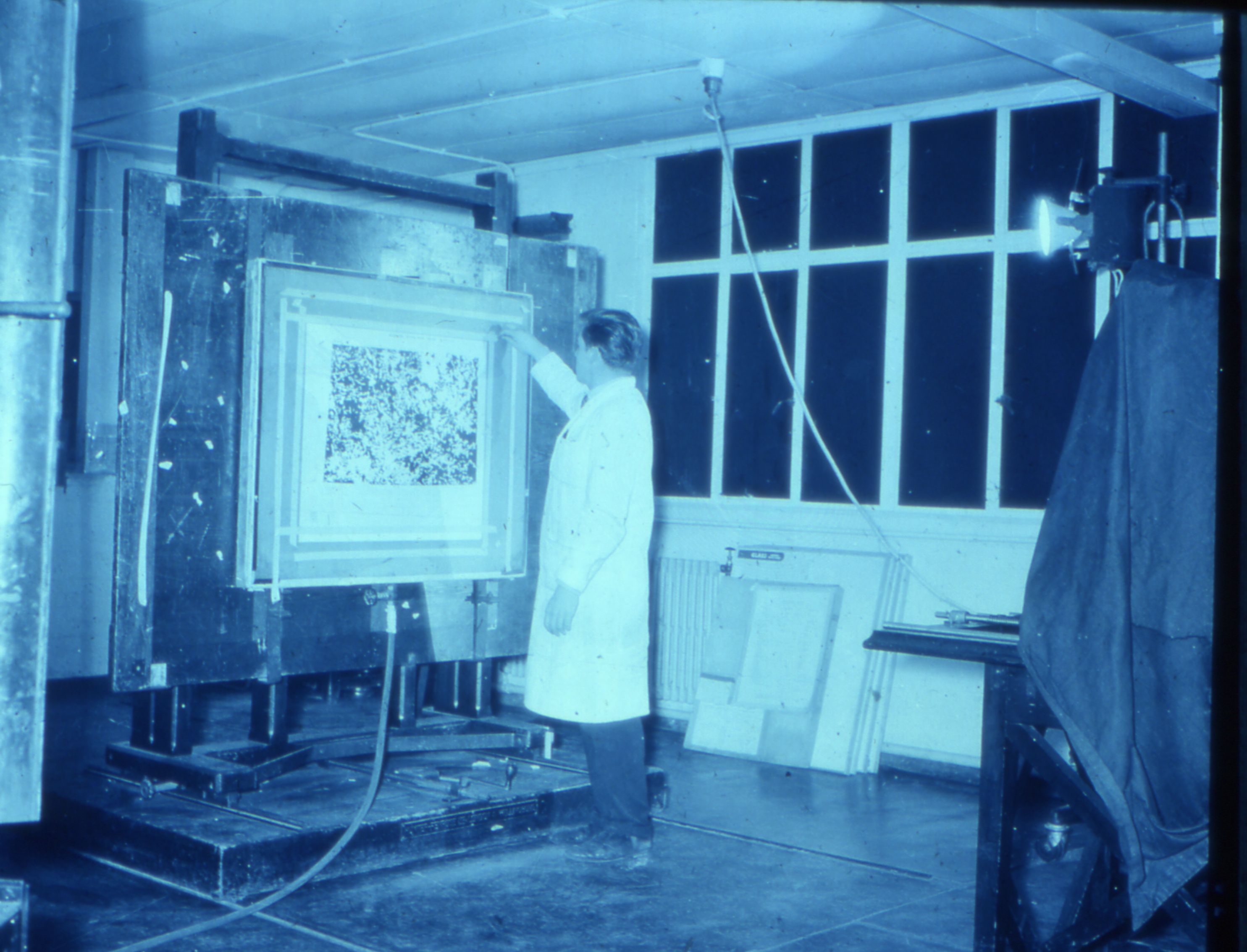
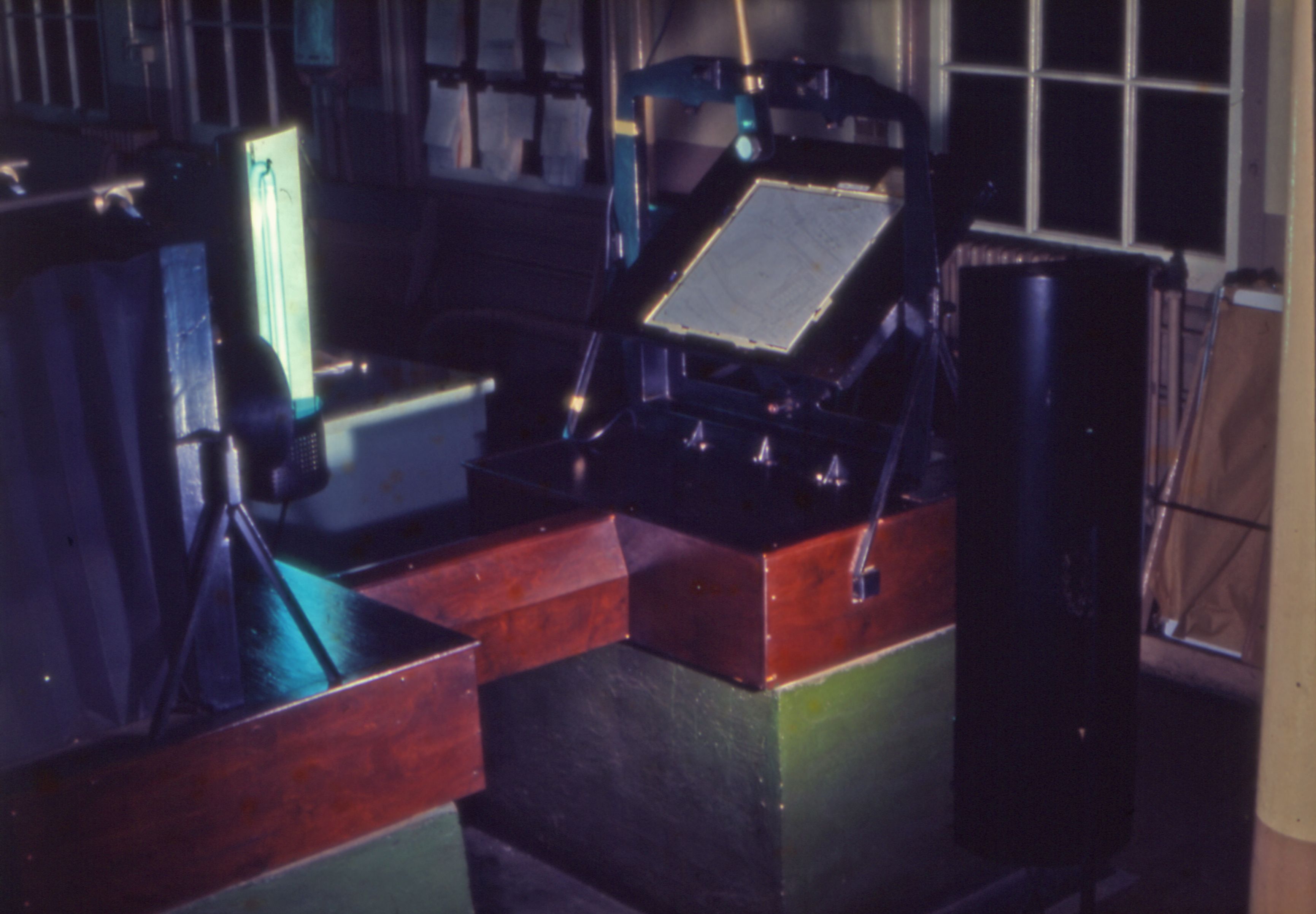
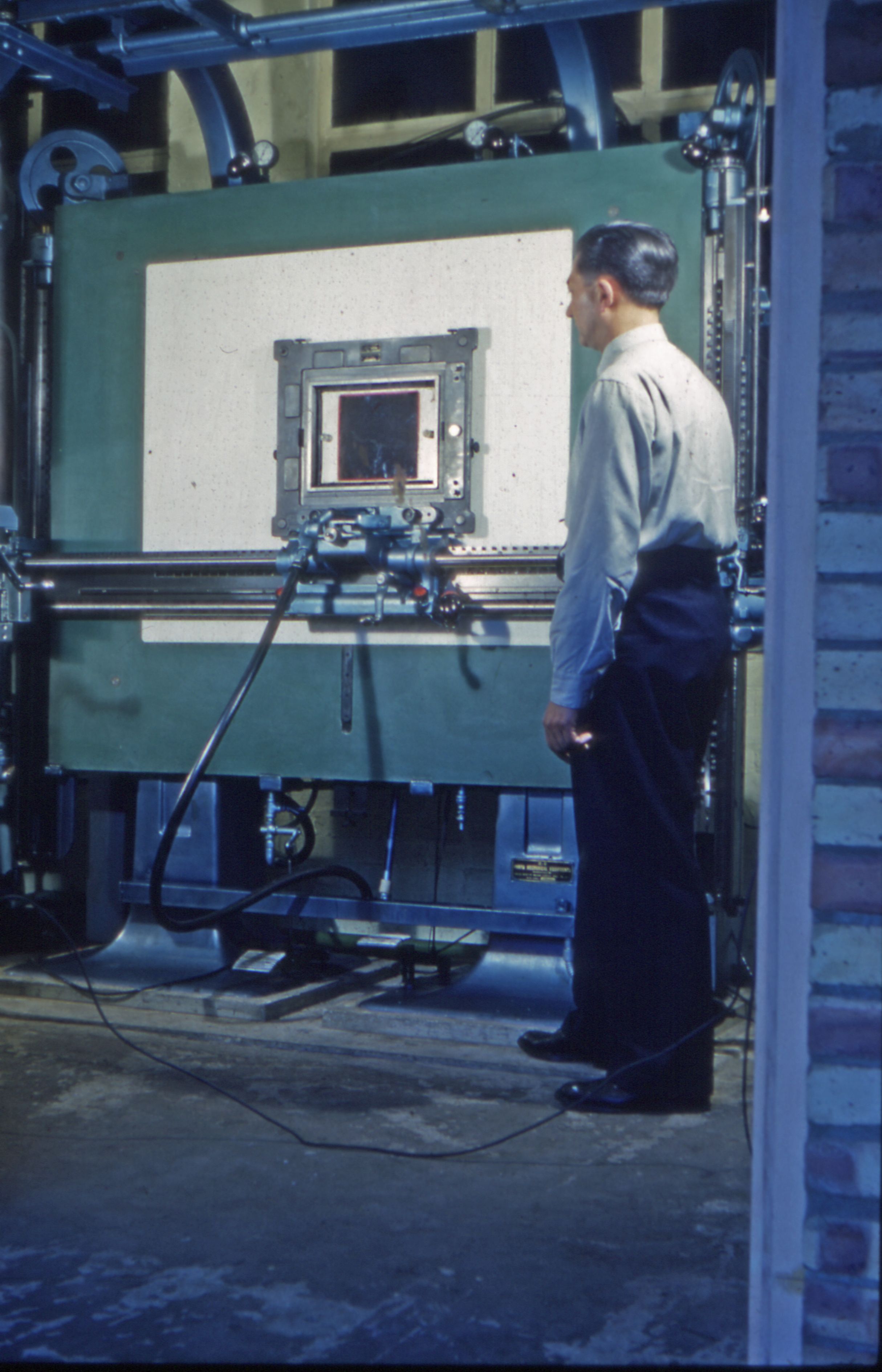
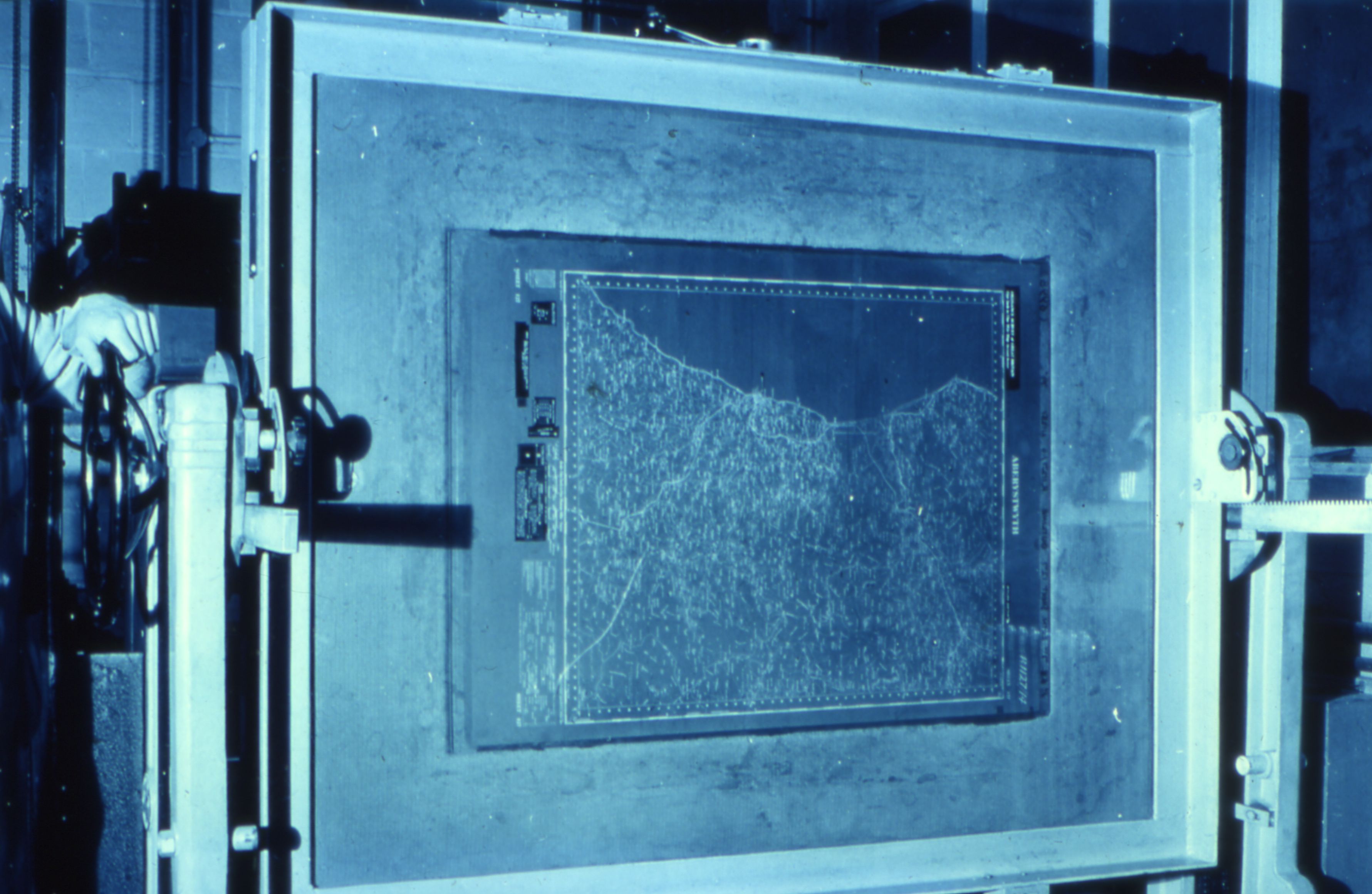
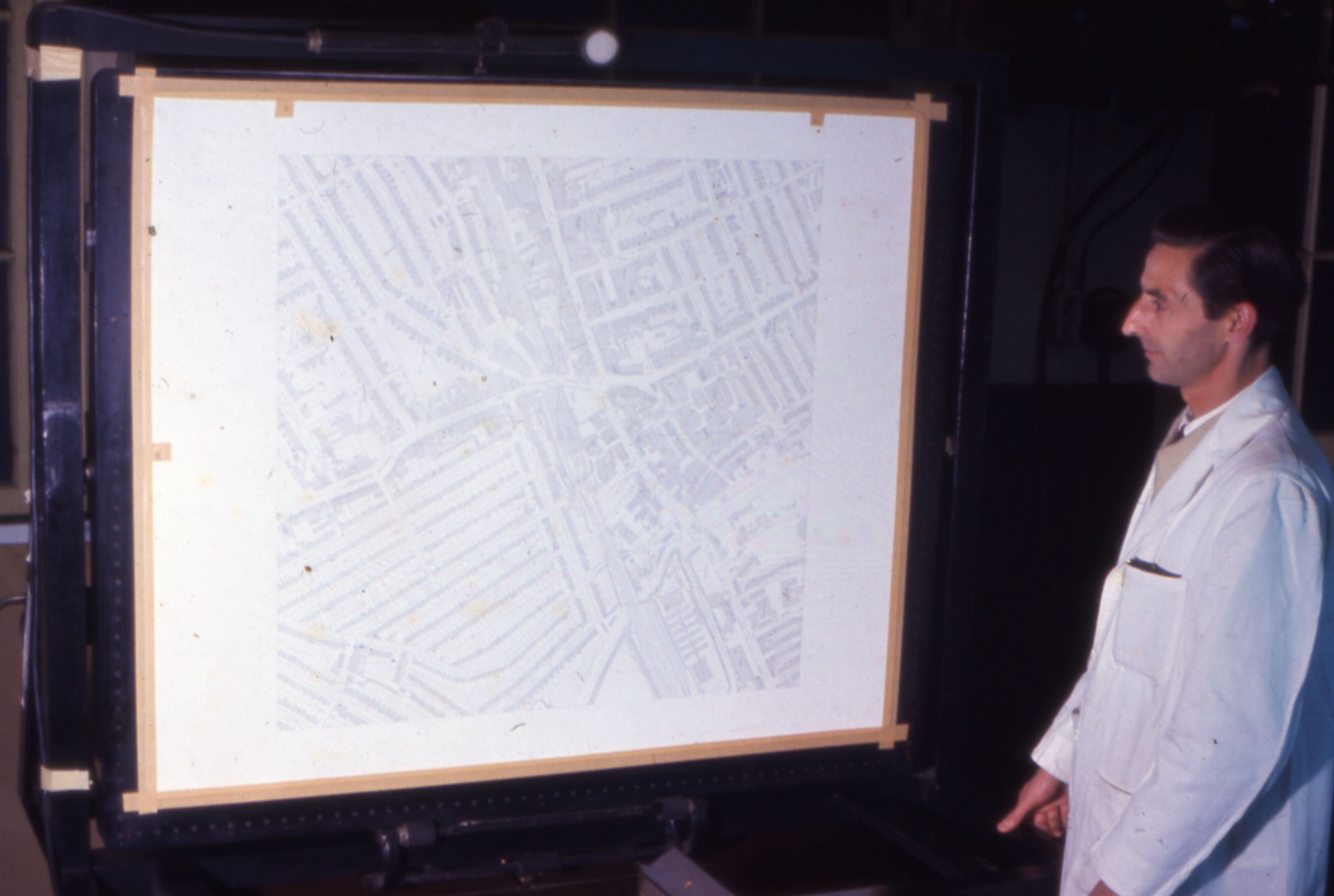
Last updated on Monday 17 July 2023 by GaryReggae
